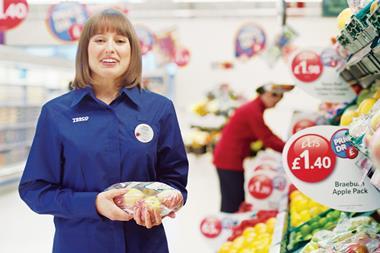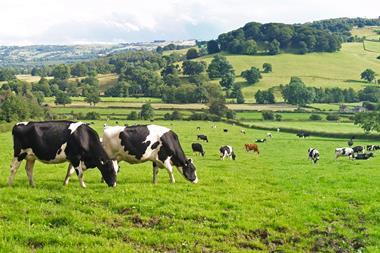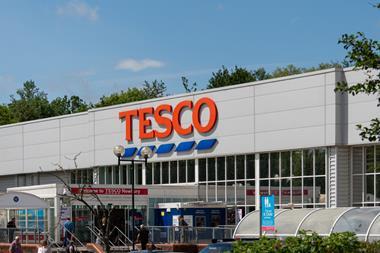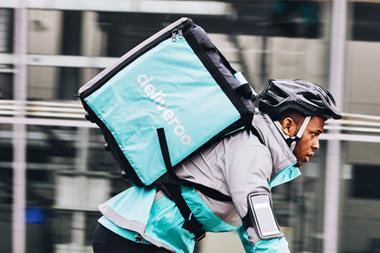Tesco is determined to change the market while rivals slog it out for Safeway. Siân Harrington reports
n The Safeway takeover will alter the competitive arena in grocery
n Pricing pressure will continue to drive trade
n The trend to convenience will remain strong
n Non-food development set to increase
n Customers will look for simpler and easier ways to shop
In times of uncertainty businesses must give more to their customers and “be better and faster at delivering it,” says Tesco marketing director Tim Mason. With government due to reveal who has the right to bid for Safeway at the end of this month, the industry is facing a period of uncertainty in the extreme.
Mason believes this lack of stability will lead to a change in the competitive dynamics and businesses must be organised if they are to do well in the new environment.
So with the die cast for a bumpy 2004, it is propitious that Mason has been chosen to chair next month’s Marketing Society Retail Forum with its theme of speed to market in the light of fast-changing market conditions (see box). Speed is key to Tesco going forward, as can be seen by this week’s attempt to steal a march on Asda by announcing £60m price cuts. The reductions, on more than 350 products, average 12% with the price of some items falling by 46%. And pressure on prices will be one of the main issues in 2004, says Mason in a statement that will send shivers down the spines of suppliers. “Tesco and Asda are driving trade by investing in price. We want to do it first, causing competitors to worry how they respond while we concentrate on trading.”
The success of this price-focused strategy is borne out by market share figures. This week TNS released monthly data which showed that Tesco had increased its lead with a seemingly unbeatable 27% market share. Asda, which overtook Sainsbury last month, holds onto second place at 17% with Sainsbury at 16%. Safeway’s growth dropped 0.8%.
Tesco’s strategy will put pressure on whoever wins the Safeway auction. With its market share, Tesco is unlikely to get the go-ahead to bid but with most commentators favouring Morrisons and some believing Asda has a chance, the two other major EDLP players could be tied up over the next few months in putting their bid proposals together.
This will leave Tesco free to concentrate on winning customers by “helping them spend less”, says Mason. He adds: “Safeway has been relinquishing trade to others in the market. Whoever gets it will have to try to stop this. The process of transforming it will be destabilising in itself and will form a key part of next year’s trading for the company that takes it over.”
Among current trends that will persist in 2004 is convenience, says Mason, and Tesco is well placed to exploit it with the roll out of the programme to convert T&S stores to Express.
Thanks to more sophisticated convenience formats “the compromise customers have to make in terms of price and quality are much less than in history”, says Mason, although he concedes “the compromise they do still make is in range”.
In larger stores product choice is expanding thanks to non-food, another area Mason sees as a major trend for next year. “Those retailers with big stores can do it, and do it faster,” he says. At the Retail Forum he is looking forward to hearing Marcos Lopez from Zara. The fashion retailer is renowned for its sophisticated supply chain, which enables it to bring product to market quicker than its competitors.
Could Tesco emulate this? “Zara is primarily about fashion. In hypermarkets price is the driver rather than fashion. And it is the mums and dads that visit rather than Zara’s customers,” he says.
Nevertheless, Tesco’s clothing brand Cherokee is growing well, according to Mason. It is now in about 300 of the company’s 780 stores and a TV advertisement is running at the moment - minus the Every Little Helps slogan usually carried on Tesco’s ads. “So far so good,” says Mason. “It is going well and growing well. We want to develop a brand that has some of its own space, hence the Design by Cherokee, Price by Tesco tagline.”
With food retailers diversifying into areas such as clothing and white goods Mason believes it will be increasingly important to simplify the shopping experience. “Retail marketing is less concerned with advertising and image and more about the shopping experience customers have.”
As arguably the top marketer in the retail industry it is telling that Mason has no truck with the view that marketing is based around advertising. “Unless the marketing people are involved in the capital investment in the business, in how range and product come on stream and in how to offer service to meet customer needs they are not doing retail marketing,” he says bluntly. “They might be doing retail sales promotion or advertising, but not marketing.”
In times of uncertainty businesses must give more to their customers and “be better and faster at delivering it,” says Tesco marketing director Tim Mason. With government due to reveal who has the right to bid for Safeway at the end of this month, the industry is facing a period of uncertainty in the extreme.
Mason believes this lack of stability will lead to a change in the competitive dynamics and businesses must be organised if they are to do well in the new environment.
So with the die cast for a bumpy 2004, it is propitious that Mason has been chosen to chair next month’s Marketing Society Retail Forum with its theme of speed to market in the light of fast-changing market conditions (see box). Speed is key to Tesco going forward, as can be seen by this week’s attempt to steal a march on Asda by announcing £60m price cuts. The reductions, on more than 350 products, average 12% with the price of some items falling by 46%. And pressure on prices will be one of the main issues in 2004, says Mason in a statement that will send shivers down the spines of suppliers. “Tesco and Asda are driving trade by investing in price. We want to do it first, causing competitors to worry how they respond while we concentrate on trading.”
The success of this price-focused strategy is borne out by market share figures. This week TNS released monthly data which showed that Tesco had increased its lead with a seemingly unbeatable 27% market share. Asda, which overtook Sainsbury last month, holds onto second place at 17% with Sainsbury at 16%. Safeway’s growth dropped 0.8%.
Tesco’s strategy will put pressure on whoever wins the Safeway auction. With its market share, Tesco is unlikely to get the go-ahead to bid but with most commentators favouring Morrisons and some believing Asda has a chance, the two other major EDLP players could be tied up over the next few months in putting their bid proposals together.
This will leave Tesco free to concentrate on winning customers by “helping them spend less”, says Mason. He adds: “Safeway has been relinquishing trade to others in the market. Whoever gets it will have to try to stop this. The process of transforming it will be destabilising in itself and will form a key part of next year’s trading for the company that takes it over.”
Among current trends that will persist in 2004 is convenience, says Mason, and Tesco is well placed to exploit it with the roll out of the programme to convert T&S stores to Express.
Thanks to more sophisticated convenience formats “the compromise customers have to make in terms of price and quality are much less than in history”, says Mason, although he concedes “the compromise they do still make is in range”.
In larger stores product choice is expanding thanks to non-food, another area Mason sees as a major trend for next year. “Those retailers with big stores can do it, and do it faster,” he says. At the Retail Forum he is looking forward to hearing Marcos Lopez from Zara. The fashion retailer is renowned for its sophisticated supply chain, which enables it to bring product to market quicker than its competitors.
Could Tesco emulate this? “Zara is primarily about fashion. In hypermarkets price is the driver rather than fashion. And it is the mums and dads that visit rather than Zara’s customers,” he says.
Nevertheless, Tesco’s clothing brand Cherokee is growing well, according to Mason. It is now in about 300 of the company’s 780 stores and a TV advertisement is running at the moment - minus the Every Little Helps slogan usually carried on Tesco’s ads. “So far so good,” says Mason. “It is going well and growing well. We want to develop a brand that has some of its own space, hence the Design by Cherokee, Price by Tesco tagline.”
With food retailers diversifying into areas such as clothing and white goods Mason believes it will be increasingly important to simplify the shopping experience. “Retail marketing is less concerned with advertising and image and more about the shopping experience customers have.”
As arguably the top marketer in the retail industry it is telling that Mason has no truck with the view that marketing is based around advertising. “Unless the marketing people are involved in the capital investment in the business, in how range and product come on stream and in how to offer service to meet customer needs they are not doing retail marketing,” he says bluntly. “They might be doing retail sales promotion or advertising, but not marketing.”



















No comments yet